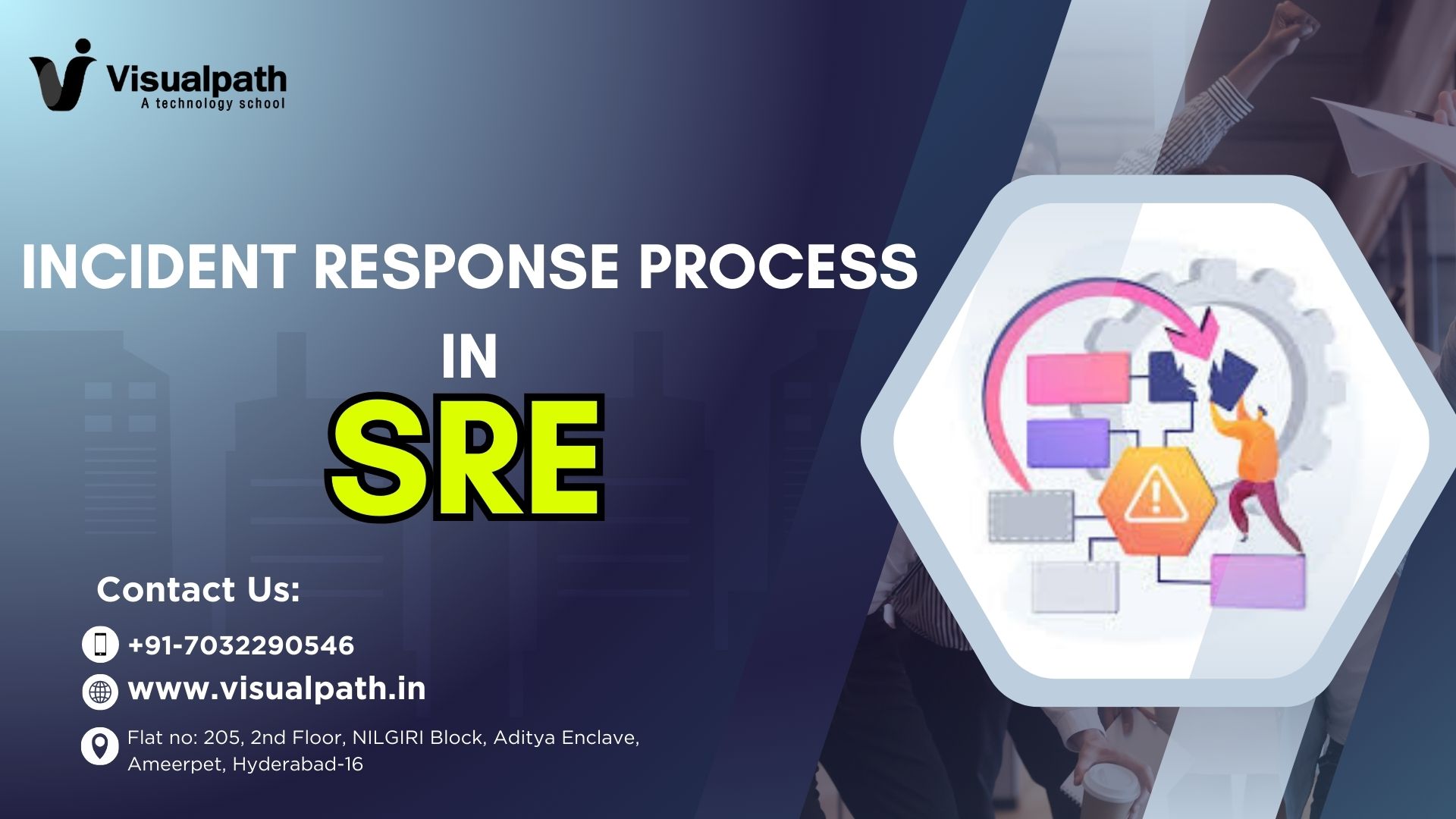Incident Response is a critical function in Site Reliability Engineering (SRE), ensuring that services remain reliable, resilient, and user-friendly even during unexpected failures. The incident response process in SRE focuses on minimizing downtime, reducing the impact on users, and learning from failures to improve systems continuously. This structured and proactive approach sets SRE apart from traditional IT operations. SRE Training Online
Understanding Incidents in SRE
An incident in SRE refers to any event that disrupts the normal operation of a service or causes degraded performance. Incidents can be caused by software bugs, hardware failures, misconfigurations, third-party outages, or even human error. SRE teams aim to detect, respond, resolve, and analyze such incidents effectively and swiftly.
Key Phases of the SRE Incident Response Process
The incident response process in SRE can be broken down into five core phases:
1. Detection and Alerting
The first step is identifying that something has gone wrong. This is typically achieved through robust monitoring and alerting systems such as Prometheus, Grafana, or Stackdriver.
- SLOs and SLIs: Site Reliability Engineers use Service Level Objectives (SLOs) and Service Level Indicators (SLIs) to define acceptable performance levels. If an SLI (e.g., request latency) deviates from its SLO, an alert is triggered.
- Automated Alerts: Well-tuned alerts ensure that incidents are detected quickly without causing alert fatigue. Site Reliability Engineering Training
2. Triage and Acknowledgment
Once an alert is raised, an on-call SRE engineer or response team acknowledges the incident.
- Prioritization: Incidents are classified by severity (e.g., SEV1 for critical outages). This helps allocate resources effectively.
- Initial Triage: The responder investigates basic details—what failed, when, and potential affected areas. Communication begins with stakeholders.
3. Mitigation and Resolution
The goal during this phase is to stop the bleeding and restore service functionality, even if temporarily, to reduce customer impact.
- Mitigation vs. Root Cause: Initial focus is on mitigation (e.g., rollback, restart, failover). The root cause analysis can wait until the system is stable.
- Collaboration Tools: SREs use incident command systems (e.g., Slack war rooms, PagerDuty) to coordinate efforts in real-time.
- Documentation: Every action is logged for later analysis.
4. Postmortem and Analysis
After the incident is resolved, a blameless postmortem is conducted. This is one of the most valuable parts of the SRE incident response process. Site Reliability Engineering Online Training
- Root Cause Analysis (RCA): Identify what went wrong and why.
- Timeline Review: Analyze what was known, when, and how decisions were made.
- Improvements: Document and prioritize action items to prevent recurrence.
- Blameless Culture: Focus on learning, not finger-pointing, to encourage honest analysis.
5. Follow-Up and Prevention
Post-incident tasks ensure long-term improvements and risk reduction.
- Automating Fixes: Recurrent failures may lead to automation (e.g., auto-scaling, canary deployments).
- Updating Playbooks: Improve incident response documentation and training.
- Resilience Engineering: Inject failure (e.g., chaos engineering) to test the system’s robustness proactively.
Best Practices for SRE Incident Response
- Clear Roles: Define roles such as Incident Commander, Communication Lead, and Scribe for large incidents.
- Runbooks: Maintain detailed, up-to-date runbooks to guide responders during high-stress events.
- Regular Drills: Conduct game days and fire drills to train teams for real-world incidents.
- Cultural Emphasis: Foster psychological safety to promote transparency and fast recovery.
Benefits of a Strong SRE Incident Response Process
- Reduced Downtime: Swift detection and mitigation minimize customer impact.
- Increased Reliability: Learning from each incident continuously improves system design.
- Better Collaboration: Structured roles and communication ensure effective teamwork. SRE Certification Course
- Customer Trust: Fast recovery and transparent communication reinforce user confidence.
Conclusion
The incident response process in SRE is not just about fixing problems—it’s a comprehensive framework that blends automation, culture, process, and learning. By detecting, mitigating, and analyzing incidents with precision, Site Reliability Engineers enable organizations to build resilient systems that meet the modern demands for reliability. In a world where every second of downtime matters, an efficient incident response process isn’t optional—it’s essential.
Trending Courses: ServiceNow, Docker and Kubernetes, SAP Ariba




